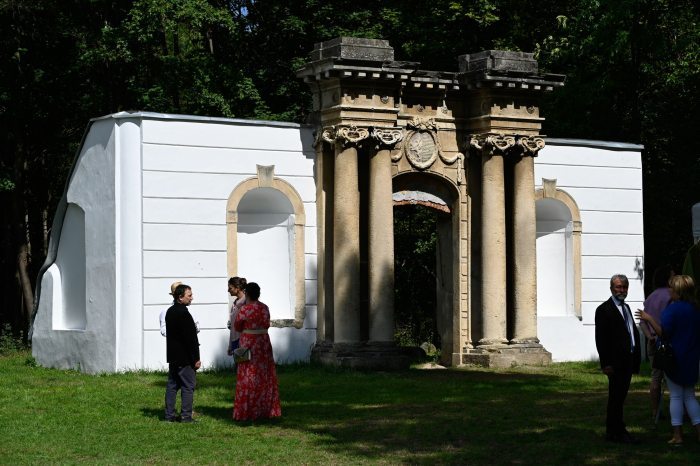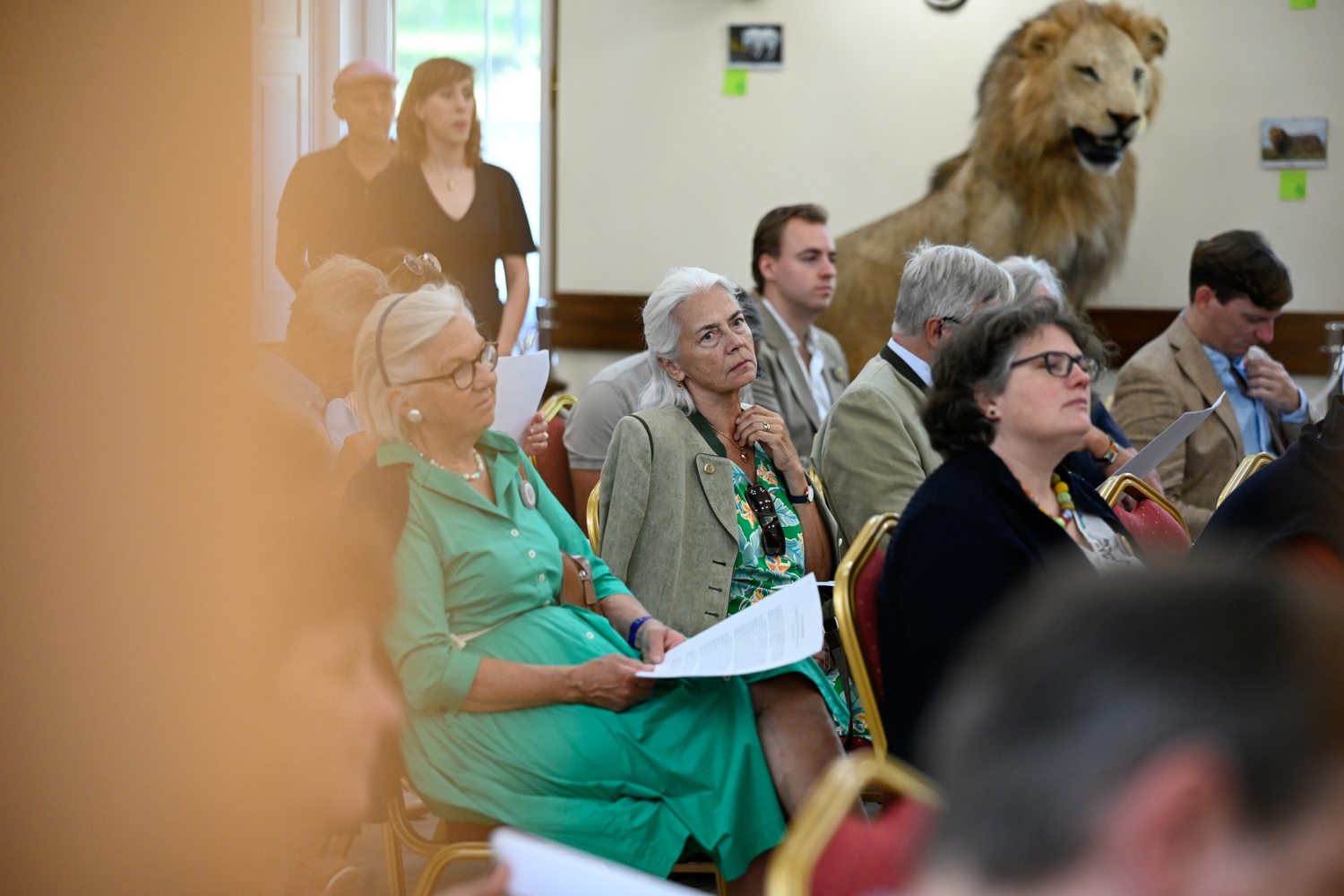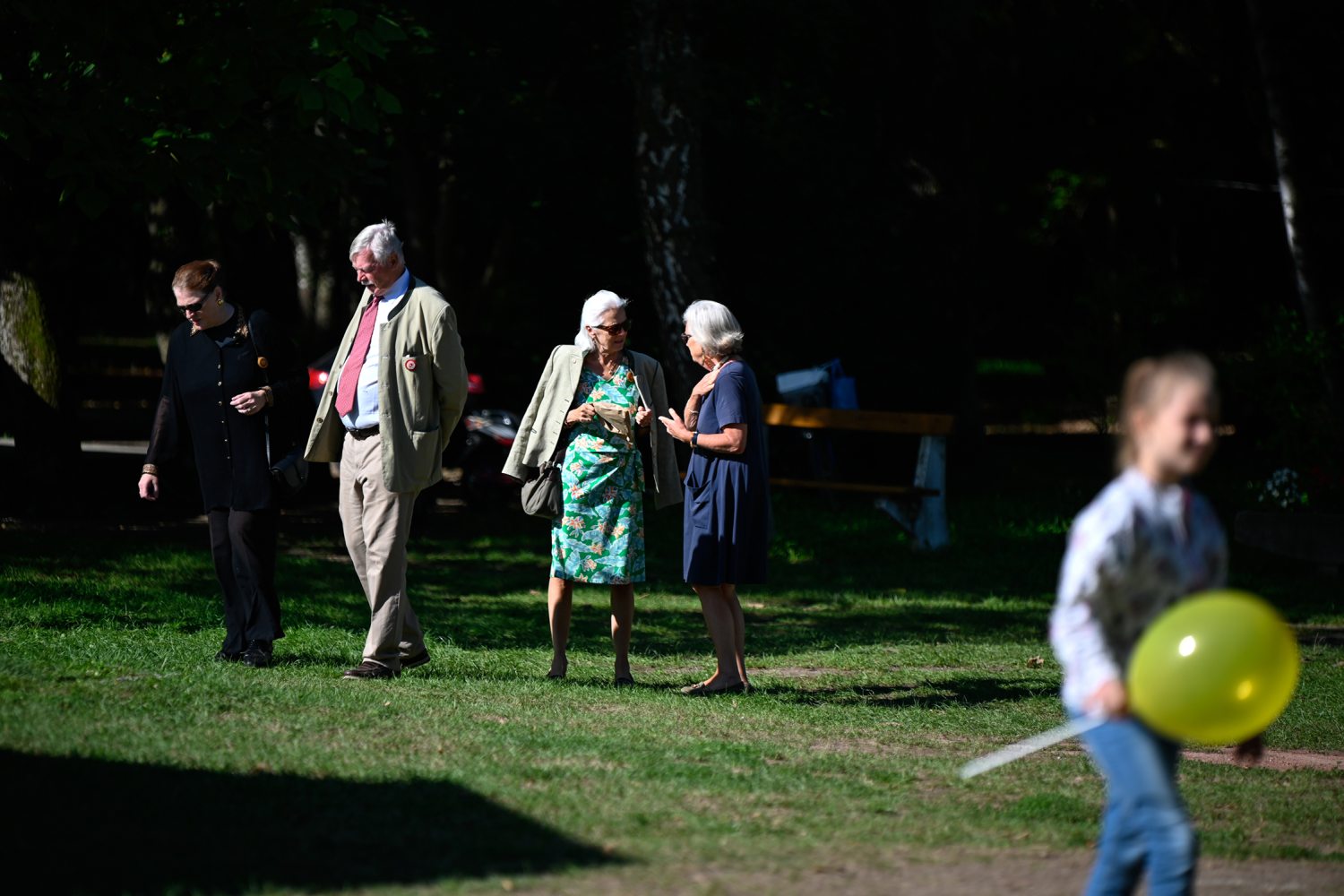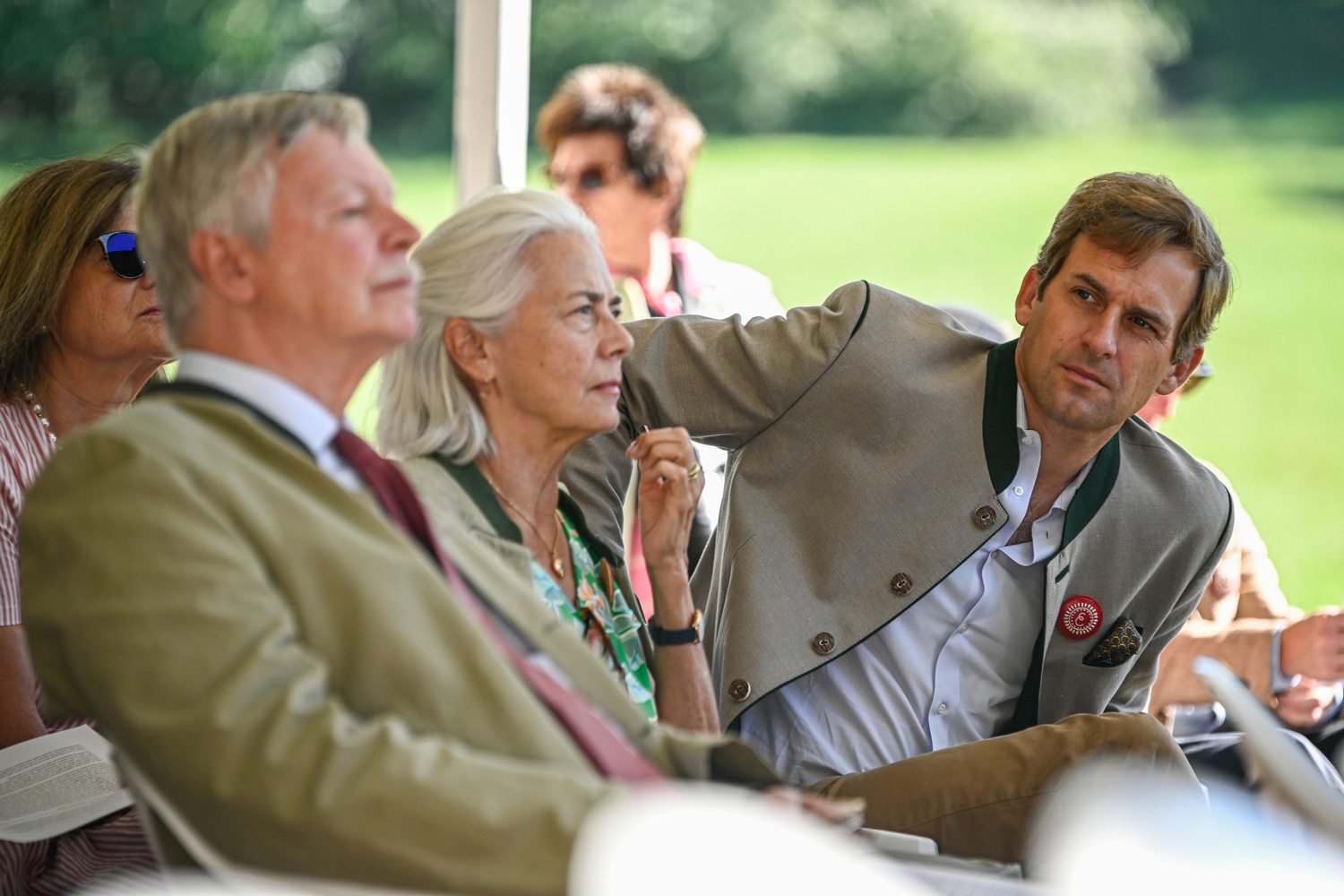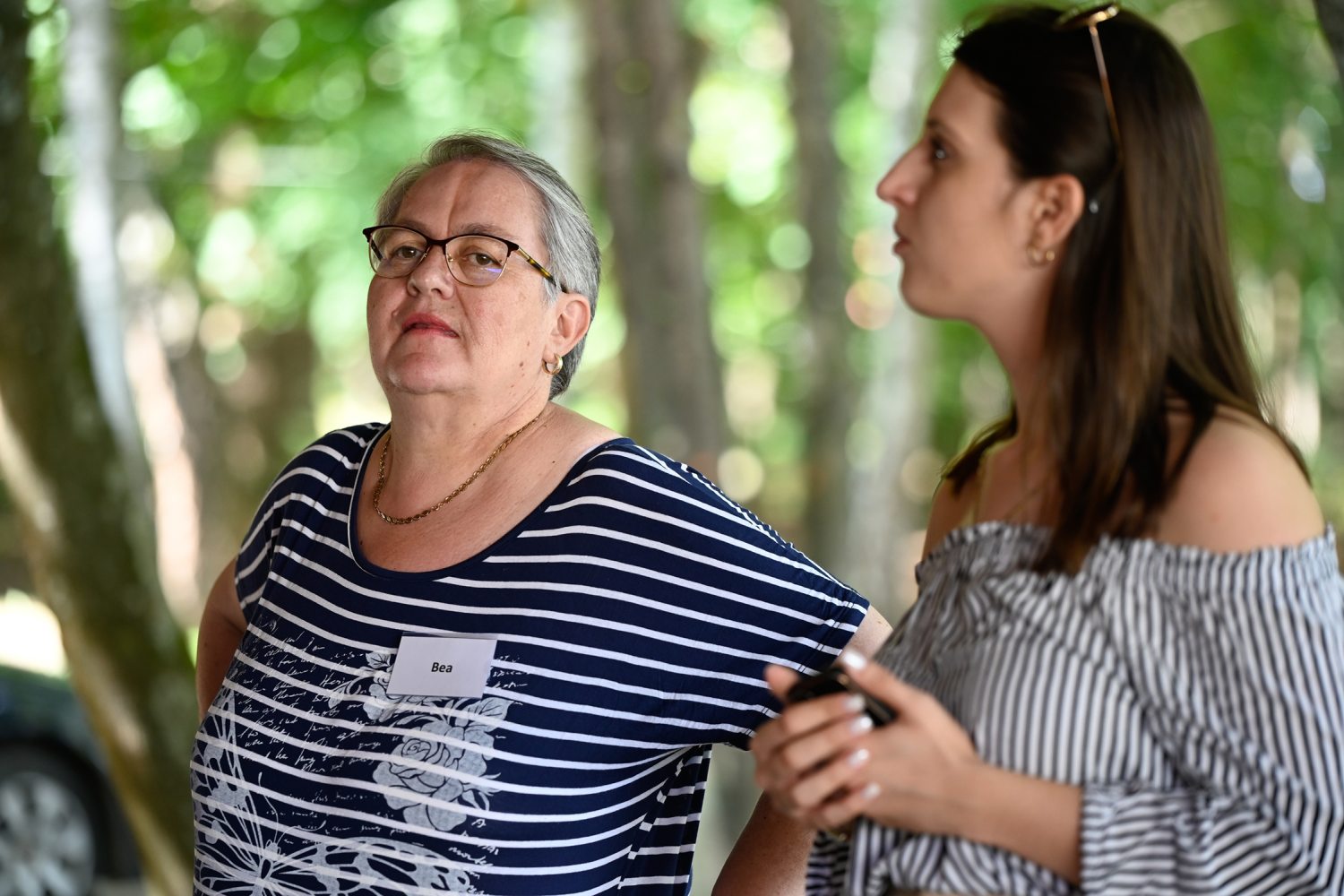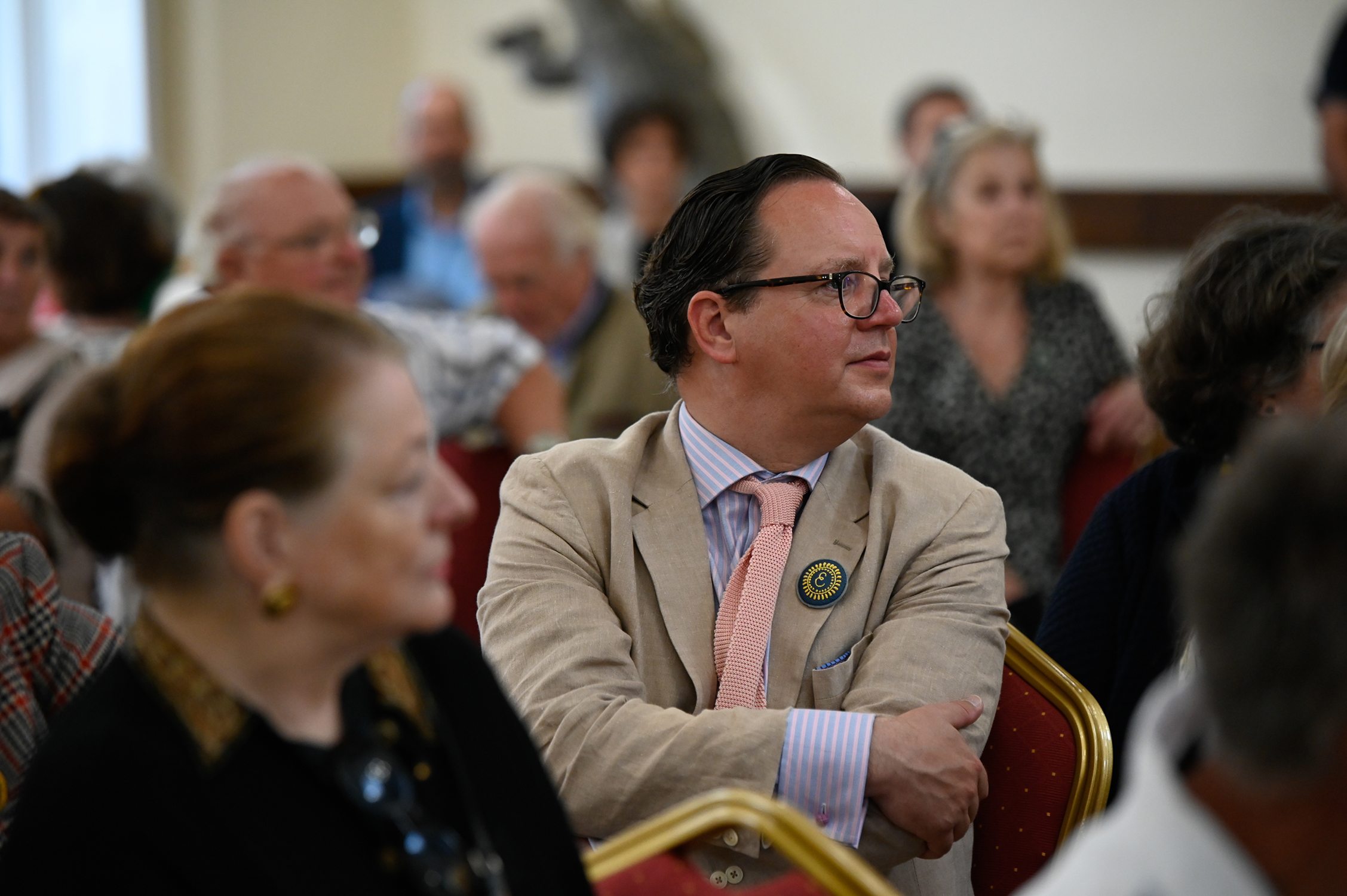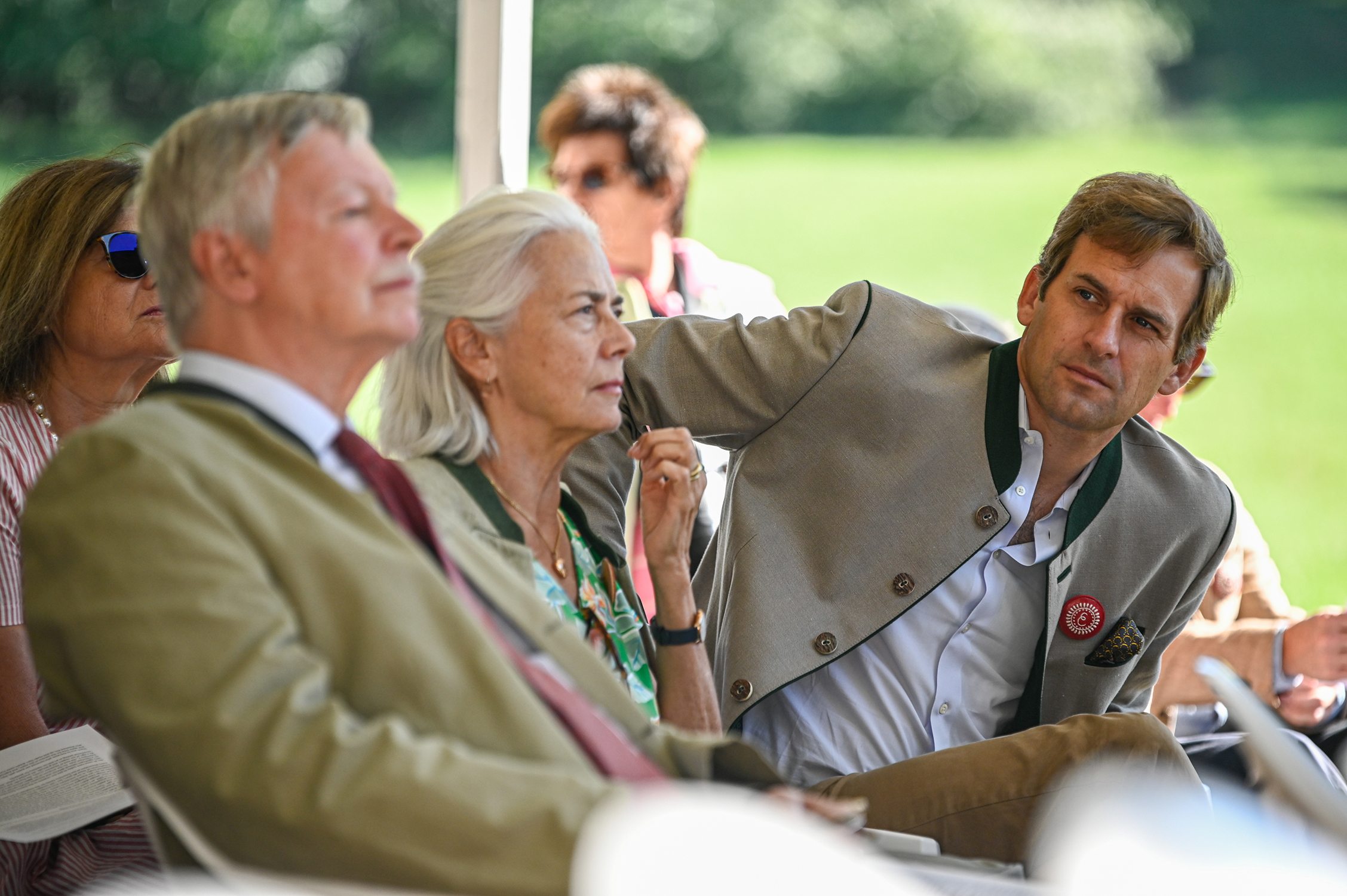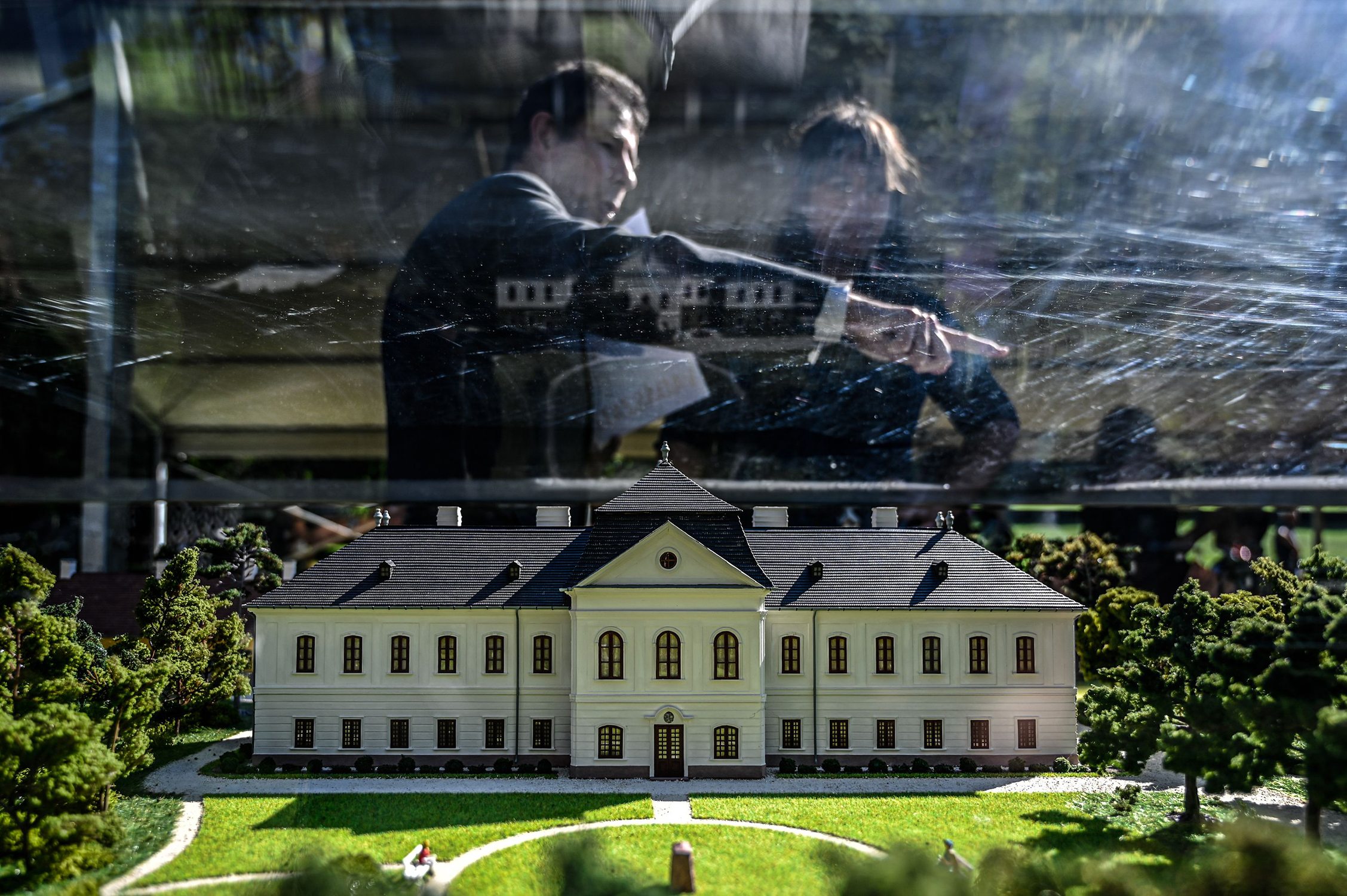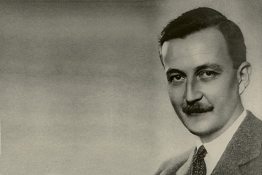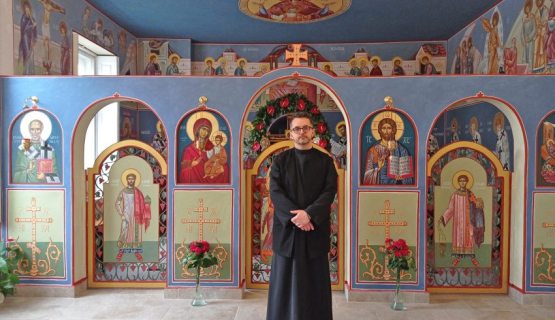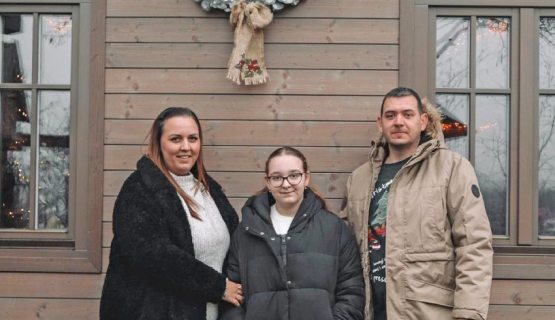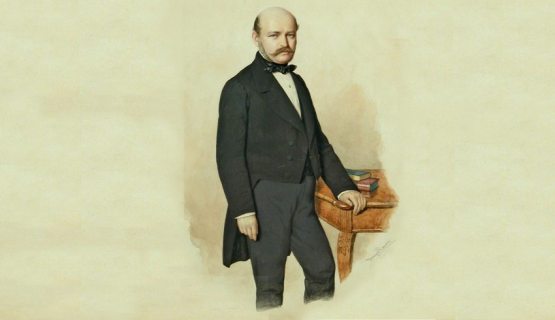The communists couldn’t wipe out the past for good – Family members from as far as Chicago and London came to the World Meeting of the Esterházys
"Respect the past to understand the present and to be able to work for the future." - this is the motto of the World Meeting of Esterházy Descendants, which took place in early September in Réde. The idea sprang from the minds of a kind local patriotic couple, who are so emotionally attached to the family that they even invested energy in ensuring that Count Lajos Esterházy could rest in the soil of Réde, in addition to Switzerland. 15 years ago, when Tibor Buda got out of the taxi at the Zurich cemetery with a bag of earth from the motherland, he said goodbye to the driver like a good Hungarian: "Viszontlátásra!” This was heard by the Esterházy relatives, and here began the series of events that culminated in the world meeting.

In bright autumn sunshine, we travel to Réde for the World Meeting of Esterházy Descendants. We pass by the castle park and then, following the music from the parking lot, we arrive at venue of the outdoor activities. While Jácint prepares his photographic equipment, I look around. We have arrived earlier than the members of the Esterházy family, the stage is still being decorated, the last flower is being put on the decoration, the folk dancers in their neatly ironed skirts and long boots are getting ready to show our fellow countrymen, who have mainly emigrated to Germany and Switzerland, what the "Magyar Wirtschaft" is. For now, the beer benches are empty, waiting for the square to be filled with curious people now still loitering at the craft stalls or the strudel maker until the show begins.
The idea and the realisation of the world meeting came from a kind and dedicated local couple. Tibor Buda was born in Réde and his wife Bea's mother also lived here. Our conversation reveals that the Buda family are true patriots (and strong local patriots), for whom roots are very important: they have already made a monument for the Unity of Hungarians, commemorated the soldiers of Réde who died in the World War, and they have done extensive research in archives, and they also came up with the idea of the Trianon monument.
The organisation of the world meeting is further proof of how much they do for their communities.
"I have been learning Hungarian for the last five weeks"
"The last living Count was Count Lajos, who lived in a nursing home near Zurich, with no children. My husband wanted to meet him very much, but unfortunately, this could not happen because, by the time the meeting was arranged, we received the news that Count Lajos had passed away. That was ten years ago. It was a very cold winter that year. It was planned that several people from Réde would go to the funeral, but no one dared to drive in the end because of the weather conditions, but my husband said that he would go by train, and so he did. As he had no knowledge of the language, our daughter and I wrote down phonetically what he should say to the taxi driver, where he should take him, and which cemetery he should go to. He wanted to bring something for the funeral, so he went out to the castle park, we made a little bag with a ribbon of the national colours, embroidered it with the name "Réde". He put some mother earth from the park in it and then he scattered it at the funeral. When he got out of the taxi, he said goodbye to the driver like a good Hungarian: "Viszontlátásra!" (“See you later”) Members of the Esterházy family standing by heard this and looked at each other in amazement: did someone here speak Hungarian? Their Hungarian was very limited but nonetheless recognized the language. They gathered around him, wanting to know who he was and what he was doing there. That's when the cooperation started", remembers one of the main organizers, Bea Buda Tiborné.
This year is the 300th anniversary of the birth of Imre Esterházy V., and to mark the occasion the couple thought that a statue should be made, and it would be worth inviting the Esterházys to the inauguration ceremony. The sculpture was completed and the World Meeting was considered the perfect occasion for the unveiling.
"We asked Mr. Pál Esterházy, with whom we kept in touch after the funeral, what he would say if we organized a large-scale Esterházy meeting around the statue's unveiling, and he was very happy with the idea. His son Béla works in a bank in Austria and has taken it upon himself to track down the surviving Esterházys.
He collected the addresses, we sent letters to Peru, Venezuela, and Brazil, we sent out a total of sixty invitations, and relatives from America and England have now come here.
With the permission of Francesca Esterházy, who lives in Australia but has a bond to Tata as well, we are now able to exhibit this cloak, which she donated to the Esterházy Castle in Tata. It was worn by Francesca's grandmother at the coronation of Charles IV," adds Bea.
When the elegantly dressed Esterházys arrive by bus at the tent, I start to search among the many shining faces who are wearing "E" badges on their jackets, indicating that they have arrived as family. My eyes meet those of a man of my age, I smile and step up to him to ask him about his roots and his feelings about his family.
"I was born in Munich, my father János Esterházy is the fifth son of my grandfather, Kázmér Esterházy. He and his wife fled from Budapest to Germany during the Second World War and stayed there for the rest of their lives," Vincent Esterházy tells me about his family history. - "I turned thirty this year, and it's only recently that I've really started to realize what it means to me to be an Esterhazy, and I've become more and more interested in our family history and History in general.
For me, one of the most important things I feel about my family is humility.
At least I try to be humble and be a bit thankful for a lot of things that happened to me. I had some crises in my own life, I had struggles, and I had to overcome them by myself but this feeling of belonging, being related, and being part of History helped me find the strength I needed, and helped me with my struggles. But I think humble is a word I would like to use. I've spent the last five weeks learning Hungarian, but the moment I entered the country I was shocked at how little I understood the language. But I want to continue to learn, to connect, not only to Hungarian History but to modern Hungary, to culture, to music, the movies, and much more. The whole weekend is amazing because we are celebrating not only family, but everyone who is connected to us, plus I get to meet relatives I didn't know before. I am very happy!" – rejoices Vincent.
"Have you ever seen anything like this before?" - I point curiously to the stage, where the Eszterlánc Folk Dance Group of Réde is dancing with tightly braided plaits, pleated skirts, and loud boot-strap snaps.
"No," Vincent shakes his head.- And it amazes me! – he adds.
There are still many prejudices about the Esterházy family in Hungary
After the program, we go over to the Stewards House, where we can visit several exhibitions, including objects donated by the Esterházy manor in Tata, as well as displays of hunting, weapons, and wildlife of the Bakony hills. The event's expert, Zoltán Terplán, will later give a lecture on the Esterházys. The historian points out that he sees it as a big problem that the stereotype of the Esterházy family is still alive today, namely that they were aulic, i.e. Habsburg-loyal.
"The Esterházy family originates from the time of the House of Árpád, and they have played an important role in the history of Hungary and Europe especially since its members became part of the aristocracy from noblemen in the 17th century thanks to Miklós Esterházy. They gave the country a prime minister and ministers, but they did not only work in politics and diplomacy. The first Hungarian athletics association was founded by Miksa Esterházy in 1875. Pál Esterházy was also a multifaceted personality in the late 17th and early 18th centuries.
Besides helping to defend Vienna against the Turks and liberate Buda, he reorganized the Hungarian administration after the Turkish occupation, wrote one of the greatest works in Hungarian Baroque music history, Harmonia Caelestis, and compiled a beautiful book in honour of the Virgin Mary.
The Esterházys always said that if someone was elected King of Hungary, you had to stand by him. In the autumn of 1921, Count Ferenc Esterházy fled the last Hungarian royal couple, Charles IV and Queen Zita, to Tata to escape arrest after their second unsuccessful attempt to return. The escape failed to achieve its purpose, but it also proves that the Esterházys were not only the ones to teach us such grand-sounding notions such as "Hungarianism" and "Christianity", because they were also extremely capable people who did something for the country. The communists have pretty well achieved what we hear in the song The International: to wipe out the past for good. They were unable to build, so they started to dismantle the Esterházy estates as early as 1945, and then gradually they tore up their roots. Their archives were destroyed, family members were eradicated, those who could not flee were deported, and in 1956 many left the country," explains the historian and museologist.
Looking at the exhibits, a lady speaks to me in English.
"You know, my biggest regret is that I didn't learn Hungarian." "It's not too late," I reply with a smile, but she just shakes her head. "I think it is," she says. I want to continue the conversation, but she modestly moves on. I am jolted out of my thoughts by a huge laugh, lift my head and see another lady with an 'E' badge, who has a glow as strong as the sun shining inside her. She is laughing with her head thrown back, her hair in a tight bun, her hands gesticulating vigorously as she visibly entertains those around her with some exciting story. When I speak to her, it turns out that she is none other than the famous opera singer Christine Esterházy von Galántha (maiden name Christine Obermayer), who became part of the family thanks to the love of her life. "I have sung in many places, in Vienna, Budapest, Munich, in the most varied opera houses. In 1992, I met a wonderful man, Endre Esterházy, in Munich, and two years later we were married.
I also studied musicology, and when you delve into this field, you realise how important the Esterházys are to culture.
I am still very interested in the family history and I am very happy to be here in Réde. It's wonderful that they think of our family in this way here, and we are all happy to be in this beautiful country and in this beautiful village, so I want to thank them," she says.
All that remained of the castle is the main entrance with its tympanum
Zoltán Terplán also tells us that we are not standing in the castle, built in the 18th century, because it was burnt down in 1947 allegedly due to an attic fire, and only the main entrance with its tympanums and the steward's house, which is currently owned by János Varga and in which the exhibition is also being presented, remain. "The steward’s house was used as social housing during the communist era but was eventually bought by a private owner and turned into a hunting lodge. It was beautifully restored and enriched with a hunting collection. There is also a nature trail, and old photos show that deer used to wander through the castle park, where the countesses used to walk," adds the museologist. The historian explains that the Esterházys provided work for the whole of Réde and the people who lived in the area, who worked the fields, were servants, craftsmen, and artisans. The estate worked so well that it was able to produce for the market.
"The Esterházys are people just like us, they don't feel that they have to walk down the street differently just because they are Esterházys."
"But at times like this they feel the love that surrounds them, that they indeed have given something to this village, to this community, and that although they live in many different places in the world, they belong together," the expert concludes.
The main organizer couple believes that if we do not cherish our past, we have no future, and they see the World Meeting of Esterházy Descendants as a meeting of past and present, because members of the generation that was deported came, but there are also descendants who are meeting for the first time in Réde. The communists did not succeed in wiping out the past, the regime change took place, the dictatorship was abolished, and the Esterházy family is still united today, coming back to Hungary to cherish their traditions and nurture their roots.
